Exploring the presence of narcolepsy in patients with schizophrenia
Background:
There are several case reports of patients with narcolepsy and schizophrenia, but a systematic examination of the association of both disorders has not been done. The aim of this work is to assess the frequency of narcolepsy with cataplexy in a large consecutive series of adult patients with schizophrenia and schizoaffective disorder.
Methods:
We screened 366 consecutive patients with schizophrenia or schizoaffective disorder with a sleep questionnaire and the Epworth Sleepines scale (ESS) exploring narcoleptiform symptoms. Those who screened positive were assessed by a sleep specialist, and offered an HLA determination. CSF hypocretin-1 determination was proposed to those who were HLA DQB1*06:02 positive.
Results:
On the screening questionnaire, 17 patients had an ESS score ≥11 without cataplexy, 15 had cataplexy-like symptoms with an ESS score < 11, and four had an ESS score ≥11 plus cataplexy-like symptoms. Of those, 24 patients were evaluated by a sleep specialist. Five of these 24 were HLA DQB1*06:02 positive, and three of these five subjects underwent lumbar puncture showing normal hypocretin-1 levels.
Conclusions:
Our results suggest that narcolepsy with cataplexy is not an unrecognized disease in adult patients with schizophrenia or schizoaffective disorder.
Keywords:
Hallucinations, Narcolepsy, Hypocretin, Psychotic disorders, Schizophrenia
Authors:
Gemma Sansa 1*; Alba Gavaldà 2; Carles Gaig 3; José Monreal 4; Guadalupe Ercilla 5; Roser Casamitjana 6; Gisela Ribera 1; Alex Iranzo 3; Joan Santamaria 3
Authors place of work:
Neurology Service and Multidisciplinary Sleep Disorders Unit, Hospital Parc Taulí, Sabadell, Spain.
1; Neuropsychology Department, Neurology Service. Hospital Parc Taulí, Sabadell, Spain.
2; Neurology Service and Multidisciplinary Sleep Disorders Unit, Hospital Clínic of Barcelona, Barcelona, Spain.
3; Psychiatry Service, Hospital Parc Taulí, Sabadell, Spain.
4; Immunology Laboratory, Hospital Clínic of Barcelona, Barcelona, Spain.
5; Biochemistry and Molecular Genetics Laboratory, Centre de Diagnòstic Biomèdic (CDB), Hospital Clínic of Barcelona, Barcelona, Spain.
6
Published in the journal:
BMC Psychiatry 2016, 16:177
Category:
Research Article
doi:
https://doi.org/10.1186/s12888-016-0859-9
© Sansa et al. 2016
Open Access This article is distributed under the terms of the Creative Commons Attribution 4.0 International License (http://creativecommons.org/licenses/by/4.0/), which permits unrestricted use, distribution, and reproduction in any medium, provided you give appropriate credit to the original author(s) and the source, provide a link to the Creative Commons license, and indicate if changes were made. The Creative Commons Public Domain Dedication waiver (http://creativecommons.org/publicdomain/zero/1.0/) applies to the data made available in this article, unless otherwise stated.
The electronic version of this article is the complete one and can be found online at: https://bmcpsychiatry.biomedcentral.com/articles/10.1186/s12888-016-0859-9
Summary
Background:
There are several case reports of patients with narcolepsy and schizophrenia, but a systematic examination of the association of both disorders has not been done. The aim of this work is to assess the frequency of narcolepsy with cataplexy in a large consecutive series of adult patients with schizophrenia and schizoaffective disorder.
Methods:
We screened 366 consecutive patients with schizophrenia or schizoaffective disorder with a sleep questionnaire and the Epworth Sleepines scale (ESS) exploring narcoleptiform symptoms. Those who screened positive were assessed by a sleep specialist, and offered an HLA determination. CSF hypocretin-1 determination was proposed to those who were HLA DQB1*06:02 positive.
Results:
On the screening questionnaire, 17 patients had an ESS score ≥11 without cataplexy, 15 had cataplexy-like symptoms with an ESS score < 11, and four had an ESS score ≥11 plus cataplexy-like symptoms. Of those, 24 patients were evaluated by a sleep specialist. Five of these 24 were HLA DQB1*06:02 positive, and three of these five subjects underwent lumbar puncture showing normal hypocretin-1 levels.
Conclusions:
Our results suggest that narcolepsy with cataplexy is not an unrecognized disease in adult patients with schizophrenia or schizoaffective disorder.
Keywords:
Hallucinations, Narcolepsy, Hypocretin, Psychotic disorders, Schizophrenia
Background
Narcolepsy with cataplexy (narcolepsy type 1) is a chronic neurological disease with an estimated lifetime prevalence of 2.5–5 per 10.000 people [1, 2]. Clinically, it is characterized by excessive daytime sleepiness (EDS), cataplexy, hypnagogic/hypnopompic hallucinations and sleep paralysis, as well as other sleep disturbances, such as sleep fragmentation [3]. Symptoms usually begin in adolescence, 1,4 and they are the result of hypocretin deficiency [4].
Hypocretins are neuropeptides that have a central role in the control of alertness [5, 6]. Undetectable or low hypocretin-1 levels in cerebrospinal fluid (CSF) are found in 95 % of narcoleptic patients with cataplexy [4, 7]. The mechanism causing this hypocretin deficit is still unknown, but is currently thought to be immune-mediated since up to 85–95 % of patients with narcolepsy with cataplexy have the HLA allele DQB1*06:02 [3,8].
Hypocretin deficit is closely related to human leukocyte antigen (HLA) DQ B1*06:02 and cases of hypocretin-deficient narcolepsy without this HLA haplotype are exceptional. HLA typing is a useful screen before lumbar puncture since 98 % of patients with hypocretin-1 deficiency are DQB1*06:02 positive. 7 There are neurological disorders that can cause secondary narcolepsy [9, 10]. Clear-cut or definite cataplexy is considered a pathognomonic symptom for diagnosing narcolepsy [11] and is defined as more than one episode of generally brief and usually bilaterally symmetrical sudden loss of muscle tone with retained consciousness precipitated by strong emotions typically associated with laughter or elation. Some subjects may report features reminiscent of cataplexy that are not clear-cut, either because they are mild, atypical or only subjective experiences, a situation termed “cataplexy-like” particularly when using questionnaires in population-based studies [12, 13]. Narcolepsy type 1 [9] is diagnosed when hypersomnia is accompanied by 1) cataplexy and abnormal multiple sleep latency test (MSLT) or 2) low values of hypocretin-1 concentration in CSF.
Schizophrenia is one of the most devastating mental illnesses and has an estimated lifetime prevalence of 7, 2 per 1.000 people [14]. The core symptoms of schizophrenia include delusions, hallucinations and thought disorder [15]. Schizophrenic symptoms usually also emerge during adolescence [15, 16]. Dopamine neurotransmission abnormalities in the mesocorticolimbic system with an increase in dopamine synthesis, dopamine release and resting-state synaptic dopamine concentrations play a central role in the generation of schizophrenic symptoms [17, 18]. The etiology of schizophrenia is unknown, although and interplay between genetic and environmental factors has been suggested [15].
There are several previous case reports of narcoleptic patients with psychotic symptoms [19, 20] and of schizophrenic patients with narcoleptic features [21, 22, 23]. Two recent studies have evaluated the presence of schizophrenia in a large number of children and adolescents with narcolepsy [24, 25], finding a small group of individuals that developed schizophrenia after being diagnosed with narcolepsy.
Several explanations could account for a possible association between narcolepsy and schizophrenia. Psychosis may develop in narcoleptic patients as a consequence of stimulant therapy, although this side effect seems infrequent even in patients treated with high doses of stimulants over a prolonged period time [23, 26]. Another option is that some narcoleptic symptoms, especially hypnagogic and hypnopompic hallucinations, could be misdiagnosed as an active psychotic state of schizophrenia [22, 23, 27]. A third option is that narcolepsy and schizophrenia could occur in the same patient because both diseases might share similar physiopathological factors. Finally, the coincidental occurrence of schizophrenia and narcolepsy in the same patient could also occur by chance. The frequency of coexistent schizophrenia and narcolepsy could be expected to be 18–36 cases in a population of ten million based on the independent prevalence of these two diseases. It is possible, however, that patients with schizophrenia who develop narcolepsy could be unrecognized because sleepiness could be attributed to the antipsychotic treatment and cataplexy could be alleviated or masked by the same antidopaminergic treatment [28].
The aim of this work was to assess the frequency of undiagnosed narcolepsy in a large cohort of patients with schizophrenia. Finding some patients with narcolepsy in our patients could support a possible association between narcolepsy and schizophrenia would increase our understanding in both disorders.
Methods
All consecutive patients with schizophrenia or schizoaffective disorder [29] followed at the adult Psychiatry Department of the Hospital Parc Taulí were proposed to participate in the study during their routine visits from February to June of 2013. Patients older than 18 years and able to answer the questions were invited to participate. Patients under 18 years were not included as they are controlled in another Psychiatric Department at our institution. The Psychiatric Ambulatory Unit of the Hospital Parc Taulí is the reference center for an approximate population of 280000 and consists of 4 psychiatric nurses and 13 psychiatrists, which during the period of the study visited approximately 600 patients with schizophrenia and schizoaffective disorder. Once the study protocol was approved it was explained to all the members of the unit and the psychologist of the study spent several days a week during the study period in the unit, reminding all the staff to invite patients to participate in the protocol. Psychiatrists and psychiatric nurses only considered eligible for the study those patients who –in their opinion- were able to answer the questions. Only seven patients were excluded later because we found their answers unreliable.
To assess whether narcolepsy was present in schizophrenia, we used a stepwise approach with three phases of evaluation.
In a first phase, consecutive patients were screened with a semi-structured questionnaire (Additional file 1) where the four main symptoms of narcolepsy were included, namely EDS, cataplexy, hypnagogic/hypnopompic hallucinations and sleep paralysis. This questionnaire was administered by a psychologist (AG) specially trained in sleep disorders. All interviews were conducted by the same psychologist, which had been specially trained in the symptoms of narcolepsy and had also clinical experience with schizophrenia. The presence of cataplexy was explored using the following question: “have you ever felt sudden weakness of your muscles when you experience a strong emotion?”. Sleep paralysis was assessed asking: “have you ever felt unable to move for a few moments as if you were paralyzed, just after waking up or when falling asleep despite being awake?” Hypnagogic/hypnopompic hallucinations were explored asking “have you ever noticed or seen things or people that do not actually exist, just after waking up or when falling asleep?”; patients that responded positively were asked to explain what exactly they felt in those moments and try to differentiate these hallucinations from schizophrenic hallucinations that could appear during wakefulness. Finally the presence of EDS was assessed with the Epworth sleepiness scale (ESS) and an score ≥ 11 was considered indicative of this symptom [30]. When patients were unable to answer a particular question in the Epworth Sleepiness Scale (for instance in a car, while stopped for a few minutes in the traffic), it was excluded in the total ESS count (meaning that maximum possible punctuation in that particular case was 21 instead of 24, and the resulting score was adjusted for this modification). Data on age, gender and age at onset of schizophrenia were also collected.
In a second phase of the study, patients with an ESS score ≥ 11 and/or cataplectic-like features were reevaluated by a neurologist from the Multidisciplinary Sleep Unit of the Hospital Parc Taulí (GS) who conducted a systematized clinical interview focusing on the presence and features of EDS, cataplexy, hypnagogic/hypnopompic hallucinations and sleep paralysis.. Patients who did not confirm cataplexy-like symptoms in this second interview were excluded. In addition, current medications were evaluated as well as the existence of other sleep disturbances (sleep fragmentation, symptoms suggestive of obstructive sleep apnea (OSA), insufficient sleep, and cyrcadian rhythm disorder). In those patients in whom EDS and/or cataplexy experiences were considered to be likely present, HLA typing was tested.
As medications such as antidepressants or other psychotropic drugs may significantly affect rapid eye movement (REM) sleep, it is recommended that polisomnography and multiple latency sleep test should be used to diagnose narcolepsy only in patients free of drugs that influence sleep. Drugs must be stopped for at least 14 days (or at least five times the half-life of the drug and longer-active metabolite), confirmed by a urine drug screen [9].
Since psychotropic medications could not be stopped in our patients for clinical management and ethical reasons we could not use these objective tests for the diagnosis of narcolepsy. However, given that narcolepsy-cataplexy type 1 occurs almost exclusively in patients with HLA DQB1*06:02, we tested the presence of this HLA haplotype in patients with symptoms suggestive of narcolepsy.
In a third phase, hypocretin-1 level determination in CSF was proposed to those patients who were HLA DQB1*06:02 positive. If a patient (and caregiver when necessary) accepted, 5 ml of CSF were obtained and immediately stored at −80 °C. The lumbar puncture was performed in the morning, before 11 am. Hypocretin-1 levels in CSF were determined using commercially available direct radio-immunoassay kit (Phoenix Pharmaceuticals, USA) as previously described 4, 31, 32] at the Hospital Clinic of Barcelona. In order to minimize inter-assay variation, reference samples with internal controls with known hypocretin-1 values were included in each assay and the values were adjusted accordingly as recommended [33].
Results
We included 366 consecutive patients with the diagnosis of schizophrenia or schizoaffective disorder (Table 1). There were 226 men and 140 women, with a mean age of 44.3 ± 12 (range, 18–81) years and a mean age at diagnosis of the psychiatric disorder of 25.3 ± 8.1 (range, 7–56) years.
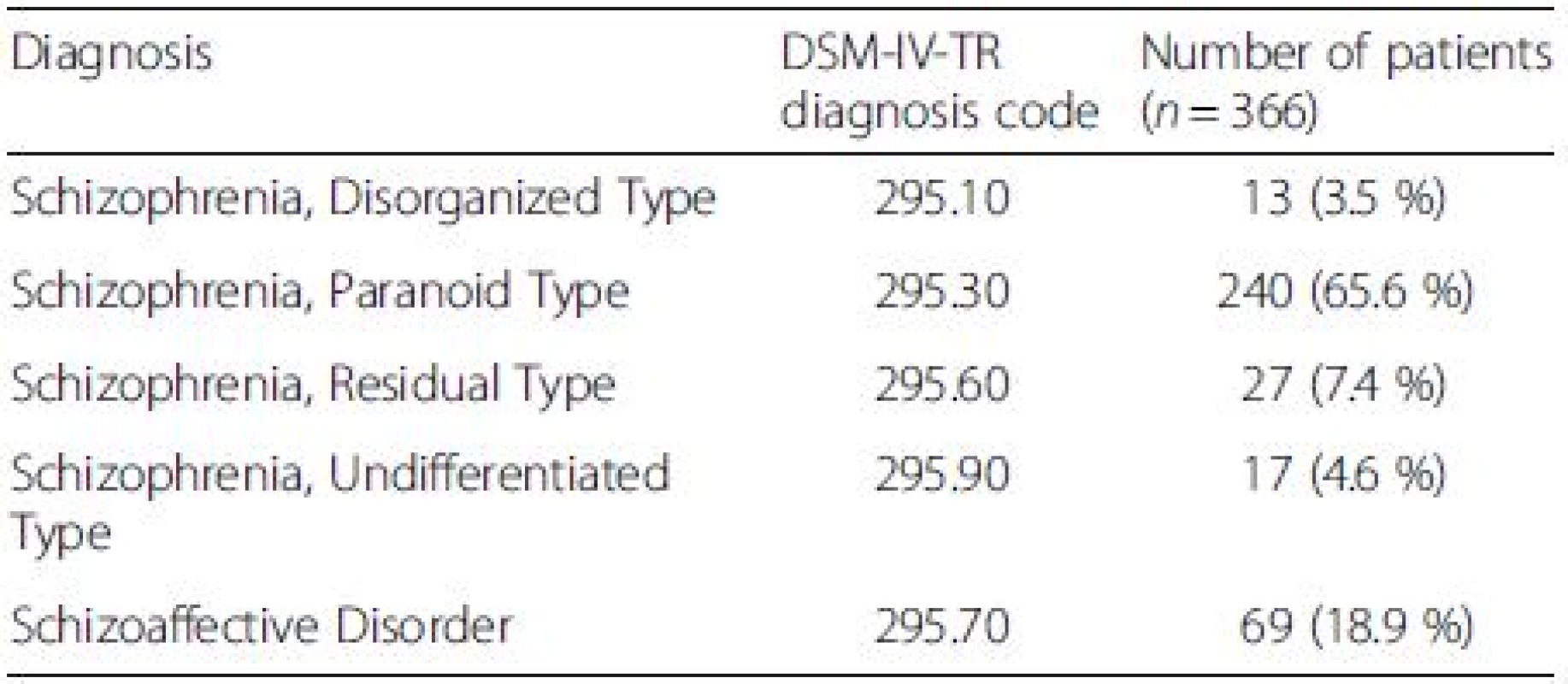
The mean ESS score was 4.1 ± 3.4 (range 0–18). Twenty-two (6 %) patients had an ESS ≥11 (Fig. 1).
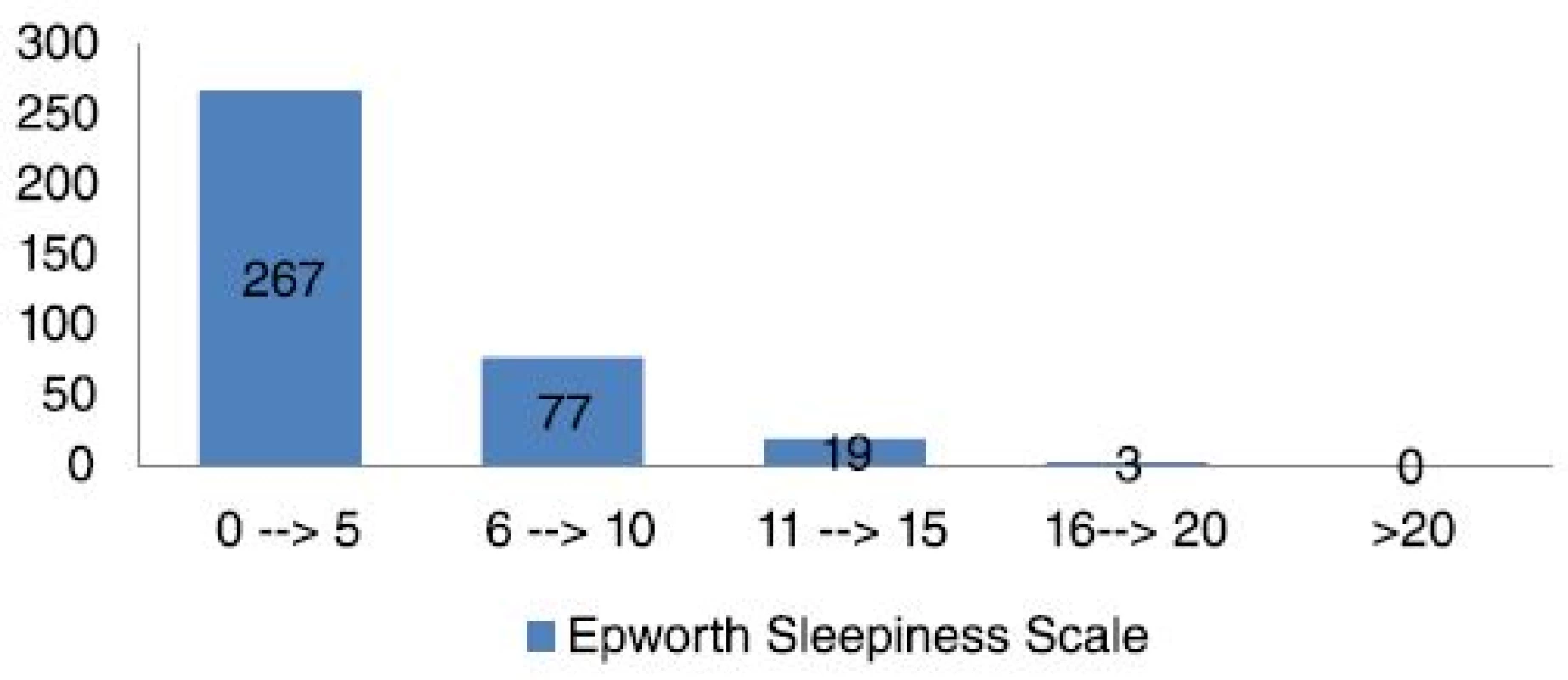
Nineteen (5.1 %) patients reported cataplexy-like experiences. Thirty-three (9 %) responded that they presented sleep paralysis and 78 (21.3 %) hypnagogic/hypnopompic hallucinations.
Thirty-six (9.8 %) patients had an ESS score ≥ 11 and/or responded affirmatively to the cataplexy question (Fig. 2). Seventeen had an ESS score ≥ 11 without cataplexy, 15 presented cataplexy-like symptoms with an ESS score < 10, and 4 patients had an ESS score ≥ 11 and/or responded affirmatively to the cataplexy question. All these 36 patients were offered to participate in the second phase, and 27 accepted. Three patients were excluded after detailed questioning by the sleep specialist (GS) who considered that neither EDS nor cataplexy-like experiences did occur. Twenty-four patients were finally included in this second phase, 11 women and 13 men, with a mean age of 39.7 ± 10 (range, 21–57) years, and a mean age at onset of the psychiatric disease of 22.8 ± 7.5 (range, 12–44) years. Clinical characteristics of this group of patients are detailed in Table 2. In 14 patients EDS was temporally related to the beginning of the antipsychotic treatment. Six out of these 24 patients reported features reminiscent of cataplexy, but no case of clear-cut cataplexy was found. Five patients presented hallucinations mainly during sleep-wake transition (two auditory –knock on the wall, a buzz-, one visual –could not specify which- and two tactile –both being touched-). Sleep paralysis was present in five out of the 24 patients.
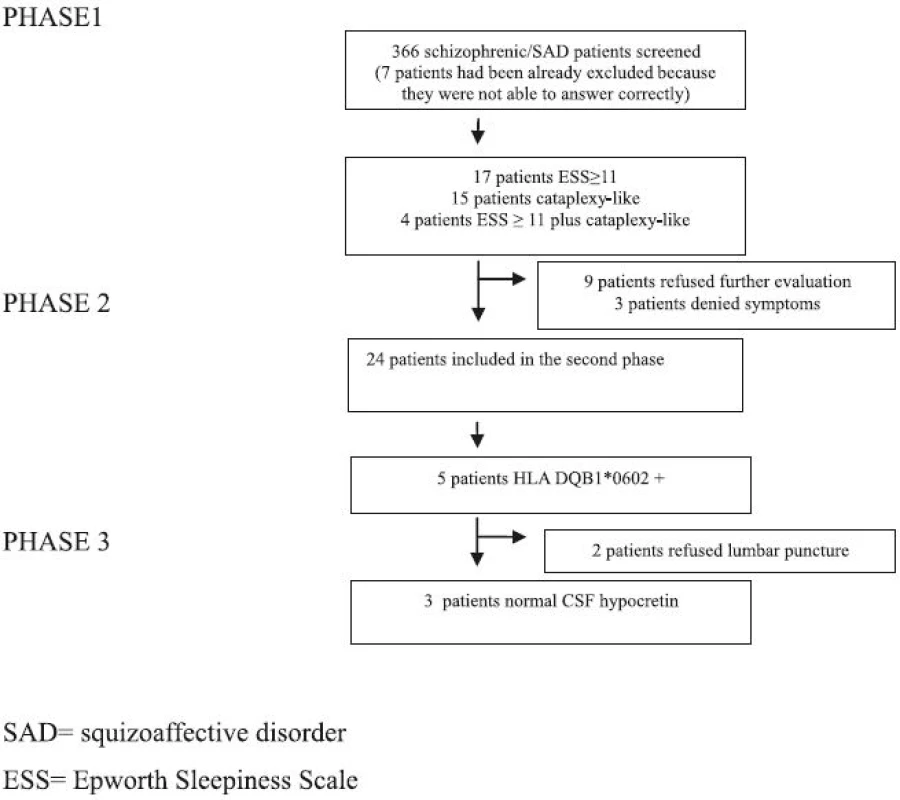
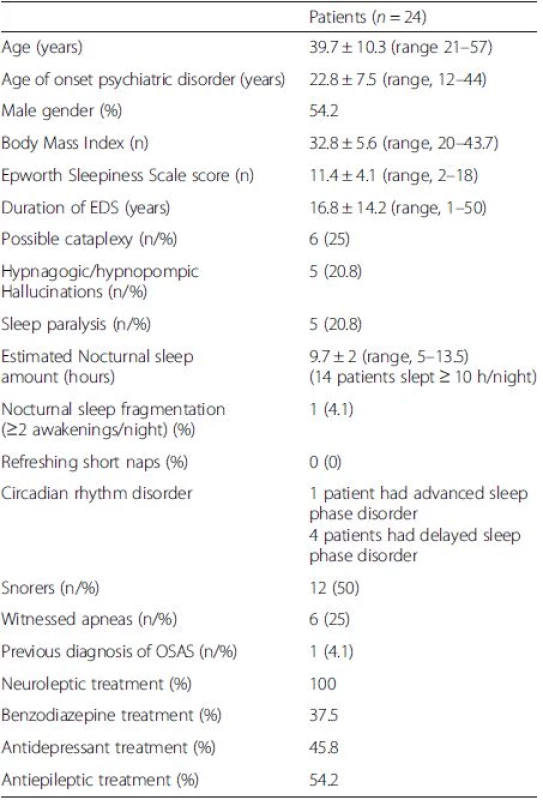
Twelve (50 %) patients were snorers and in six of them their bed partners reported apneas during sleep. Only one patient had been previously diagnosed of obstructive sleep apnea syndrome with a sleep study, which showed an apnea/hypopnea index of 78, but she did not tolerate continuous positive airway pressure treatment. Nine patients were treated with one neuroleptic drug, 13 patients with two, and three patients with three. Five patients were treated with one benzodiazepine, and four with two. Nine patients were treated with one antidepressant drug, one patient with two, and one patient with three. Eight patients were treated with one antiepileptic drug, one patient with two and one patient with three.
Five out of the 24 patients had HLA DQB1*06:02, none of them homozygote nor positive for DQB1*03. Clinical characteristics of these five patients are shown in Table 3. In these 5 patients a lumbar puncture to measure CSF hypocretin-1 was proposed. Patient 1 and 2 refused. Hypocretin-1 levels were finally determined in three patients showing normal values (>200 pg/ml) in all of them.
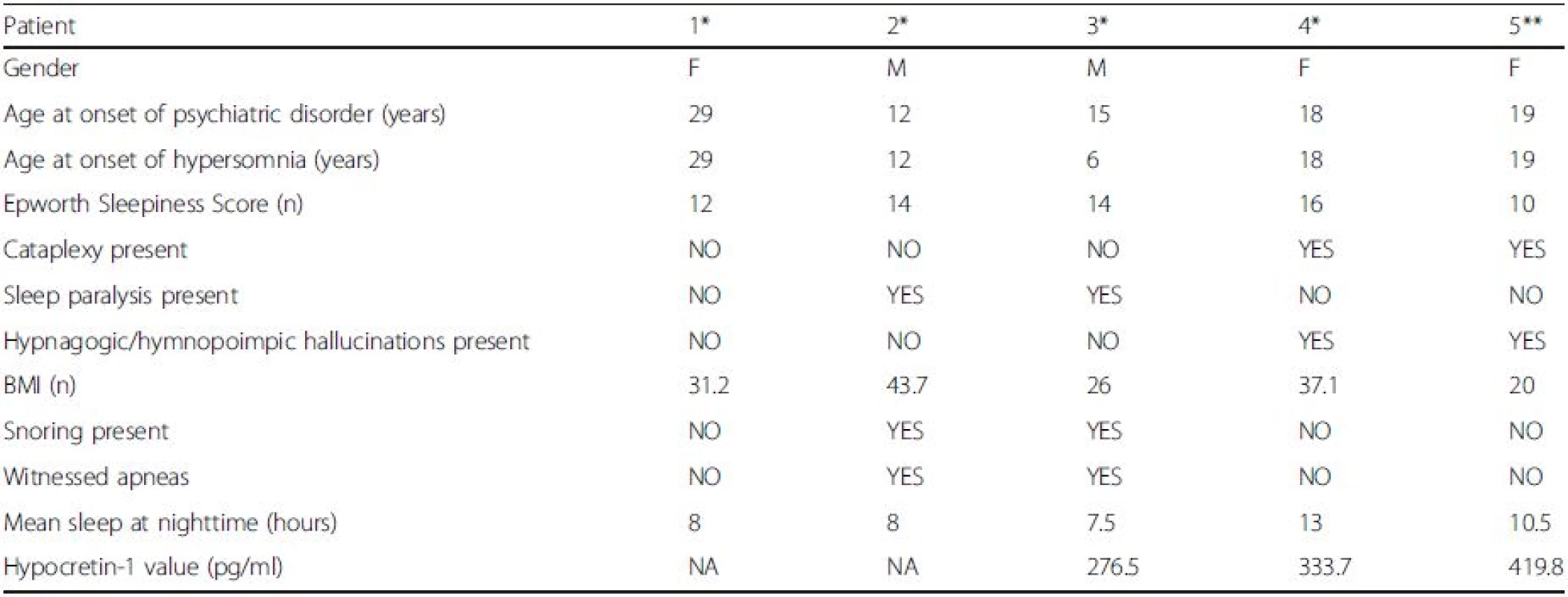
Discussion
To our knowledge, this is the first study evaluating systematically and prospectively the prevalence of narcolepsy type 1 in a large group of patients with schizophrenia or schizoaffective disorder. Since antidepressants or other psychotropic drugs may significantly affect REM sleep, we did not use polysomnography and multiple latency sleep to diagnose narcolepsy in our patients, given that these drugs could not be stopped for a long enough period of time. We used instead a stepwise approach, with an initial screening of characteristic symptoms of narcolepsy in 366 patients and offering HLA determination in those who referred hypersomnia and/or possible cataplexy. Last step was determining hypocretin in CSF in those who were HLA DQB*06:02 positive and had EDS and/or cataplexy-like experiences. We did not find any patient with clear narcolepsy type 1 in our cohort. Although we only measured CSF hypocretin in three patients, they were the majority of subjects reporting hypersomnia and cataplexy-like symptoms who had a positive HLA DQB1*06:02. Although there are cases of DQB1*06:02 negative patients with narcolepsy type 1, this is highly infrequent since it is estimated that less than one in 500 HLA-negative patients will have low CSF hypocretin-1 levels [34]. Since the poblational prevalence of narcolepsy is between 2.5 and 5 per 10000 inhabitants, it would be required to include between 4604 and 9209 patients to have a 90 % chance of observing 1 case. If schizophrenia or schizoaffective disorders were associated to an increased prevalence by 10 fold, the numbers required to detect one case would be between 459 and 919. A small sample confidence interval for the estimate, based on the exact probabilities of the binomial distribution, would be between 0 and 1.003 %, so that in our sample a prevalence of narcolepsy 1 % or lower (i e: increased by 20 to 40 fold) could not be excluded.
It is considered that sleep disturbances, particularly poor sleep quality, are common in schizophrenia [35]. Although hypersomnia is a common side effect of neuroleptics, few studies have focused on this aspect. While some authors [36] found a mean sleep latency >36 % longer (sleep propensity was lower) in 30 untreated patients with schizophrenia than in healthy subjects, other authors [37] reported a prevalence of hypersomnia of 24–31 % in 1493 treated schizophrenic patients. In our sample the frequency of hypersomnia was remarkably lower and only 5.7 % of the patients had an ESS ≥ 11, usually temporary related to the beginning of the treatment for the psychiatric disorder or the coexistence of a possible sleep breathing disorder, as in our cohort half of them were snorers, and the mean body mass index was 32.8 (moderately obese). The lower prevalence of hypersomnia in our study could also be due to the long duration of therapy and disease compared to the previous studies [36, 37].
Our findings do not suggest that in a large, single-center sample of adult schizophrenic patients narcolepsy is underdiagnosed. However, it is possible that the association of schizophrenia with narcolepsy could be age dependent, with higher risk of developing schizophrenia in only those patients who had previously initiated narcolepsy in childhood or early adolescence. Huang [25] reported that subjects with narcolepsy linked to schizophrenia were younger than those narcoleptics without schizophrenia (mean age of onset of narcolepsy, 11.25 ± 3.92 years vs 12.59 ± 3.41 years). Canellas 24 reported that the age of onset of EDS was 12.6 ± 2.3 year, age at narcolepsy diagnosis was 17.9 ± 6.2 years and age at onset of psychotic symptoms was 16.9 ± 3.4 years. Since in our sample, mean age at diagnosis of schizophrenia and schizoaffective disorder was higher, with a mean age of 25 years, we cannot completely exclude that a relationship between narcolepsy and schizophrenia exists only in younger patients.
Our study has limitations such as the lack of inclusion of patients who were considered unable to answer the questionnaires before the screening, the lack of a detailed expert sleep history in all the 336 patients initially evaluated, the lack of sleep recordings, and the lack of HLA and hypocretin-1 determinations in the whole cohort. However, in the majority of patients reporting EDS and narcoleptiform symptoms in the screening evaluation the sleep expert confirmed these symptoms. On the other hand, sleep recordings are less useful in patients treated with psychotropic drugs and the determination of CSF hypocretin-1 in such a large sample of patients with schizophrenia is almost unfeasible.
Conclusions
Based in our findings, narcolepsy is not an underrecognized disease in adult patients with schizophrenia or schizoaffective disorder. Complaints of hypersomnia are rare in these patients and whereas hypnagogic/hypnopompic hallucinations are the most frequent narcoleptiform symptom.
Ethics aproval
The study was approved by ethics committees of both hospitals (Hospital Parc Taulí and Hospital Clínic), and a written informed consent of patients was obtained.
Consent for publication
Not applicable.
Availability of data and materials
The data will not be shared because it contains indirect identifying data.
Abbreviations
CSF: cerebrospinal fluid; EDS: excessive daytime sleepiness; ESS: Epworth sleepines scale; HLA: human leukocyte antigen; MSLT: multiple sleep latency test; OSA: obstructive sleep apnea; REM: rapid eye movement.
Acknowledgements
We would like to thank our funders and all the participants for their support.
Funding
This work is not an industry supported study. All authors indicate no conflicts of interest and nothing to disclose financially. This work was supported by a grant from the Instituto de Salud Carlos III - Fondo de Investigaciones Sanitarias (PI11/00900) to Dr Carles Gaig.
Authors’ contributions
GS contributed on the design of the work, the acquisition, analysis and dinterpretation of data for the work. GE and RC contributed on the analysis of data. AG contributed on acquisition of data. CG and JS contributed on the design of the work and interpretation of data. AI, GR and JM contributed revising the paper critically for important intellectual content. All authors revised the article and all approved the final version.
Competing interests
Drs Sansa, Gavaldà, Gaig, Monreal, Ercilla, Casamitjana, Ribera, Iranzo and Santamaria disclose that they don’t have any involvement with organization(s) with financial interest in the subject matter of the paper, or any actual or potential competing interests.
Additional file
Additional file 1: Screening questionnaires: This questionnaire was developed as a screening tool for the main symptoms of narcolepsy. (DOCX 13 kb)
Received: 27 October 2015
Accepted: 10 May 2016
Published: 1 June 2016
* Correspondence:
Gemma Sansa
Neurology Service and Multidisciplinary Sleep Disorders Unit
Hospital Parc Taulí
Sabadell, Spain
gsansa@tauli.cat
Zdroje
1. Silber MH, Krahn LE, Olson EJ, Pankratz VS. The epidemiology of narcolepsy in Olmsted County, Minnesota: a population-based study. Sleep. 2002;25: 197–202.
2. Longstreth Jr WT, Koepsell TD, Ton TG, Hendrickson AF, van Belle G. The epidemiology of narcolepsy. Sleep. 2007;30:13–26.
3. Dauvilliers Y, Arnulf I, Mignot E. Narcolepsy with cataplexy. Lancet. 2007;369: 499–511.
4. Mignot E, Lammers GJ, Ripley B, Okun M, Nevsimalova S, Overeem S, Vankova J, Black J, Harsh J, Bassetti C, Schrader H, Nishino. The role of cerebrospinal fluid hypocretin measurement in the diagnosis of narcolepsy and other hypersomnias. Arch Neurol. 2002;59:1553–62.
5. de Lecea L, Kilduff TS, Peyron C, Gao X, Foye PE, Danielson PE, Fukuhara C, Battenberg EL, Gautvik VT, Bartlett FS, Frankel WN, van den Pol AN, Bloom FE, Gautvik KM, Sutcliffe JG. The hypocretins: hypothalamus-specific peptides with neuroexcitatory activity. Proc Natl Acad Sci U S A. 1998;95:322–7.
6. Sakurai T, Amemiya A, Ishii M, Matsuzaki I, Chemelli RM, Tanaka H, Williams SC, Richardson JA, Kozlowski GP, Wilson S, Arch JR, Buckingham RE, Haynes AC, Carr SA, Annan RS, McNulty DE, Liu WS, Terrett JA, Elshourbagy NA, Bergsma DJ, Yanagisawa M. Orexins and orexin receptors: a family of hypothalamic neuropeptides and G protein-coupled receptors that regulate feeding behavior. Cell. 1998;92:573–85.
7. Bourgin P, Zeitzer JM, Mignot E. CSF hypocretin-1 assessment in sleep and neurological disorders. Lancet Neurol. 2008;7:649–62.
8. Mignot E, Lin X, Hesla PE, Dement WC, Guilleminault C, Grumet FC. A novel HLA DR17, DQ1 (DQA1-0102/DQB1-0602 positive) haplotype predisposing to narcolepsy in Caucasians. Sleep. 1993;16:764–5.
9. American Academy of Sleep Medicine (ed). International classification of sleep disorders. 3rd ed. American Academy of Sleep Medicine, Darien, IL, 2014.
10. Tsutsui K, Kanbayashi T, Tanaka K, Boku S, Ito W, Tokunaga J, Mori A, Hishikawa Y, Shimizu T, Nishino S. Anti-NMDA-receptor antibody detected in encephalitis, schizophrenia, and narcolepsy with psychotic features. BMC Psychiatry. 2012;12:37.
11. Bassetti C, Aldrich MS. Narcolepsy. Neurol Clin. 1996;14:545–71.
12. Anic-Labat S, Guilleminault C, Kraemer HC, Meehan J, Arrigoni J, Mignot E. Validation of a cataplexy questionnaire in 983 sleep-disorders patients. Sleep. 1999;22:77–87.
13. Goldbart A, Peppard P, Finn L, Ruoff CM, Barnet J, Young T, Mignot E.
Narcolepsy and predictors of positive MSLTs in the Wisconsin Sleep Cohort.
Sleep. 2014;37:1043–51.
14. McGrath J, Saha S, Chant D, Welham J. Schizophrenia: a concise overview of
incidence, prevalence, and mortality. Epidemiol Rev. 2008;30:67–76.
15. van Os J, Kapur S. Schizophrenia. Lancet. 2009;374:635–45.
16. Jablensky A, Sartorius N, Ernberg G, Anker M, Korten A, Cooper JE, Day R, Bertelsen A. Schizophrenia: manifestations, incidence and course in different cultures. A World Health Organization ten-country study. Psychol Med Monogr Suppl. 1992;20:1–97.
17. Laruelle M. Imaging dopamine transmission in schizophrenia. A review and meta-analysis. Q J Nucl Med. 1998;42:211–21.
18. Guillin O, Abi-Dargham A, Laruelle M. Neurobiology of dopamine in schizophrenia. Int Rev Neurobiol. 2007;78:1–39.
19. Undurraga J, Garrido J, Santamaria J, Parellada E. Treatment of narcolepsy complicated by psychotic symptoms. Psychosomatics. 2009;50:427–8.
20. Walterfang M, Upjohn E, Velakoulis D. Is schizophrenia associated with narcolepsy? Cogn Behav Neurol. 2005;18:113–8.
21. Bhat SK, Galang R. Narcolepsy presenting as schizophrenia. Am J Psychiatry. 2002;159:1245.
22. Douglass AB, Shipley JE, Haines RF, Scholten RC, Dudley E, Tapp A. Schizophrenia, narcolepsy, and HLA-DR15, DQ6. Biol Psychiatry. 1993;34:773–80.
23. Kishi Y, Konishi S, Koizumi S, Kudo Y, Kurosawa H, Kathol RG. Schizophrenia and narcolepsy: a review with a case report. Psychiatry Clin Neurosci. 2004; 58:117–24.
24. Canellas F, Lin L, Julià MR, Clemente A, Vives-Bauza C, Ollila HM, Hong SC, Arboleya SM, Einen MA, Faraco J, Fernandez-Vina M, Mignot E. Dual cases of type 1 narcolepsy with schizophrenia and other psychotic disorders. J Clin Sleep Med. 2014;10:1011–8.
25. Huang YS, Guilleminault C, Chen CH, Lai PC, Hwang FM. Narcolepsycataplexy and schizophrenia in adolescents. Sleep Med. 2014;15:15–22.
26. Pawluk LK, Hurwitz TD, Schluter JL, Ullevig C, Mahowald MW. Psychiatric morbidity in narcoleptics on chronic high dose methylphenidate therapy. J Nerv Ment Dis. 1995;183:45–8.
27. Ullman KC. Narcolepsy and schizophrenia. Am J Psychiatry. 1977;134:822.
28. Okura M, Riehl J, Mignot E, Nishino S. Sulpiride, a D2/D3 blocker, reduces cataplexy but not REM sleep in canine narcolepsy. Neuropsychopharmacology. 2000;23:528–38.
29. American Psychiatric Association (ed). Diagnostic and Statistical Manual of Mental Disorders. 4th ed., Rev. ed. American Psychiatric Association, Washington, DC, 2000.
30. Johns MW. A new method for measuring daytime sleepiness: the Epworth sleepiness scale. Sleep. 1991;14:540–5.
31. Nishino S, Ripley B, Overeem S, Nevsimalova S, Lammers GJ, Vankova J, Okun M, Rogers W, Brooks S, Mignot E. Low cerebrospinal fluid hypocretin (Orexin) and altered energy homeostasis in human narcolepsy. Ann Neurol. 2001;50:381–8.
32. Ripley B, Overeem S, Fujiki N, Nevsimalova S, Uchino M, Yesavage J, Di Monte D, Dohi K, Melberg A, Lammers GJ, Nishida Y, Roelandse FW, Hungs M, Mignot E, Nishino S. CSF hypocretin/orexin levels in narcolepsy and other neurological conditions. Neurology. 2001;57:2253–8.
33. Nishino S, Kanbayashi T. Symptomatic narcolepsy, cataplexy and hypersomnia, and their implications in the hypothalamic hypocretin/orexin system. Sleep Med Rev. 2005;9:269–310.
34. Han F, Lin L, Schormair B, Pizza F, Plazzi G, Ollila HM, Nevsimalova S, Jennum P, Knudsen S, Winkelmann J, Coquillard C, Babrzadeh F, Strom TM, Wang C, Mindrinos M, Fernandez Vina M, Mignot E. HLA DQB1*06:02 negative narcolepsy with hypocretin/orexin deficiency. Sleep. 2014;37:1601–8.
35. Benson KL. Sleep in schizophrenia: impairments, correlates, and treatment. Psychiatr Clin North Am. 2006;29:1033–45.
36. Kluge M, Himmerich H, Wehmeier PM, Rummel-Kluge C, Dalal M, Hinze-Selch D, Kraus T, Dittmann RW, Pollmächer T, Schuld A. Sleep propensity at daytime as assessed by Multiple Sleep Latency Tests (MSLT) in patients with schizophrenia increases with clozapine and olanzapine. Schizophr Res. 2012; 135:123–7.
37. Lieberman JA, Stroup TS, McEvoy JP, Swartz MS, Rosenheck RA, Perkins DO, Keefe RS, Davis SM, Davis CE, Lebowitz BD, Severe J, Hsiao JK; Clinical Antipsychotic Trials of Intervention Effectiveness (CATIE) Investigators. Effectiveness of antipsychotic drugs in patients with chronic schizophrenia. N Engl J Med. 2005;353:1209–23.
Štítky
PsychiatrieČlánek vyšel v časopise
BMC Psychiatry
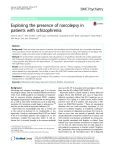
2016 Číslo 177
- Antidepresiva skupiny SSRI v rukách praktického lékaře
- Nejčastější nežádoucí účinky venlafaxinu během terapie odeznívají
- Mirtazapin v léčbě deprese spojené s nadměrným užíváním alkoholu
- Srovnání antidepresiv SSRI, mirtazapinu a trazodonu z hlediska nežádoucích účinků
- Escitalopram, paroxetin a sertralin − jsou, nebo nejsou stejné?
Nejčtenější v tomto čísle
